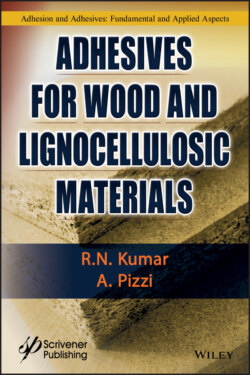Читать книгу Adhesives for Wood and Lignocellulosic Materials - R. N. Kumar - Страница 17
1.3.1.1 Growth Rings and Ring-Porous and Diffuse-Porous Wood
ОглавлениеWood cells are produced by the vascular cambium, the only living part of the tree, at the boundary between bark and sapwood, one layer of cell divisions at a time. These collections of cells produced together over a discrete time interval are known as growth increments or growth rings. Cells formed at the beginning of the growth increment are called earlywood cells, andcells formed in the latter portion of the growth increment are called latewood cells (Figure 1.1). Springwood and summerwood were terms formerly used to refer to earlywood and latewood, respectively, but their use is no longer recommended [8].
Figure 1.1 Earlywood and latewood [5].
The growth rings are usually prominent because of cyclical variation in color or porosity. These variations are in turn due to the formation of different types of cells and wood structures during different parts of the growing season. The lighter-colored (less dense) and more porous cell tissue of earlywood is formed early in the growing season. The porous earlywood cells are largely responsible for the movement of liquid and nutrients within the tree. The darker (more dense) and less porous cell tissue of the latewood, formed later in the growing season, is largely responsible for mechanically supporting the tree [5] (Figure 1.1).
Large differences between the earlywood and latewood porosity and density in some species like oak and southern pine often cause difficulty in bonding [5].
Hardwoods may be divided into ring-porous and diffuse-porous woods. Diffuse-porous woods have vessels of roughly the same radial diameter throughout the growing season. In the diffuse porous wood, the pores are distributed evenly throughout the wood.
